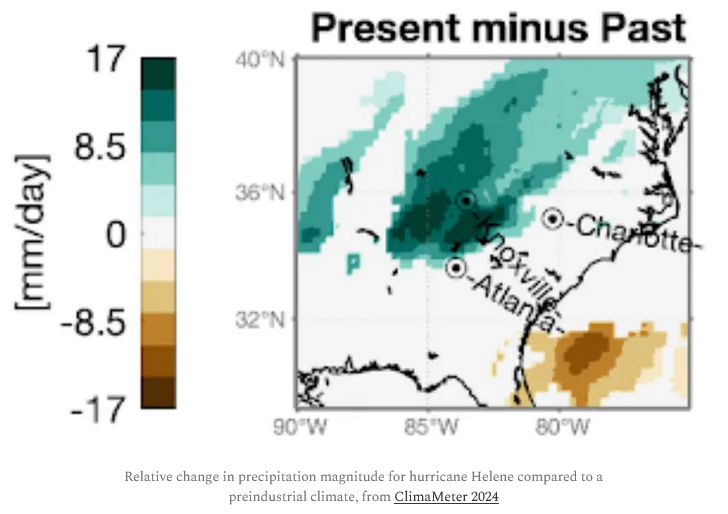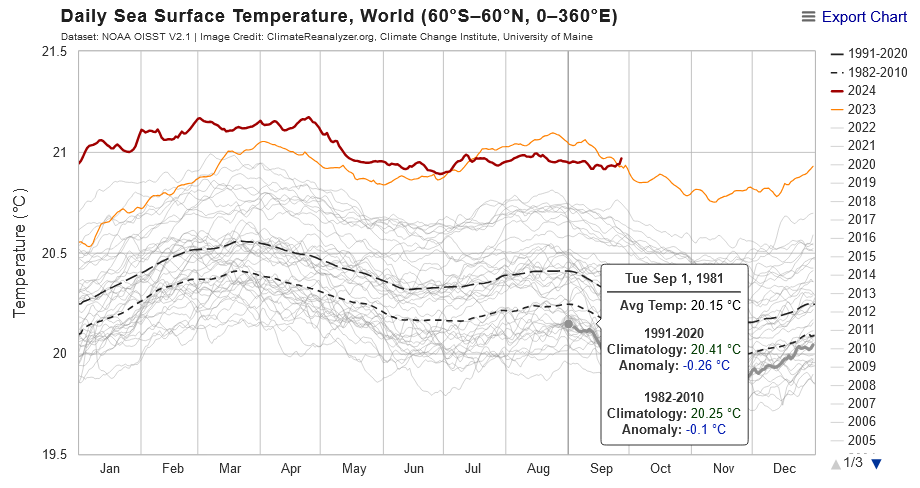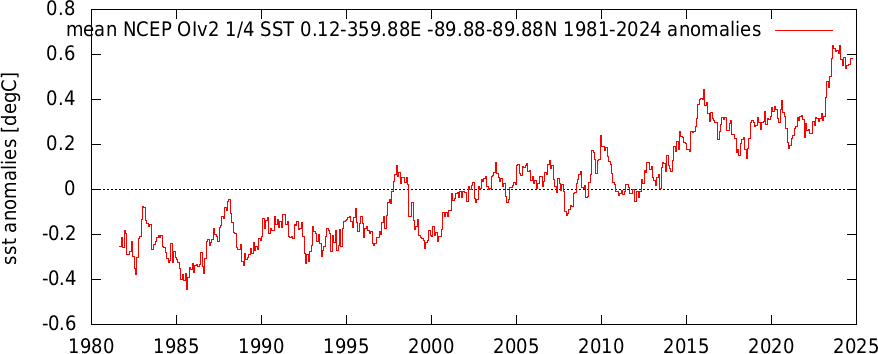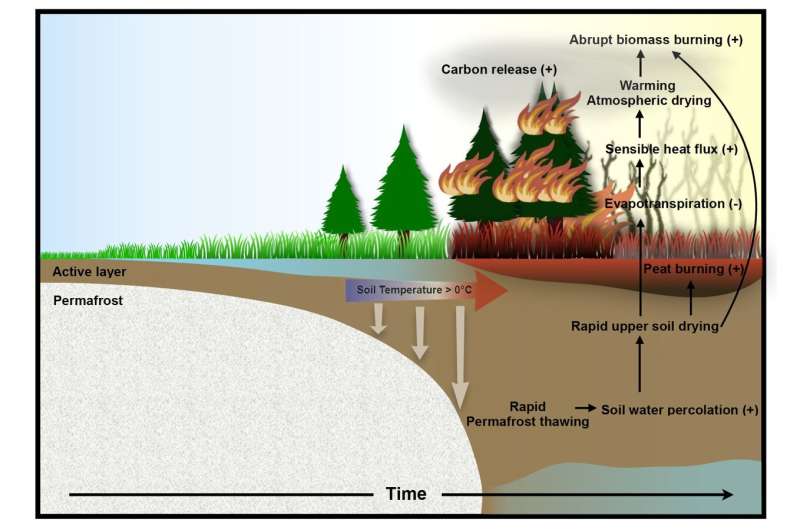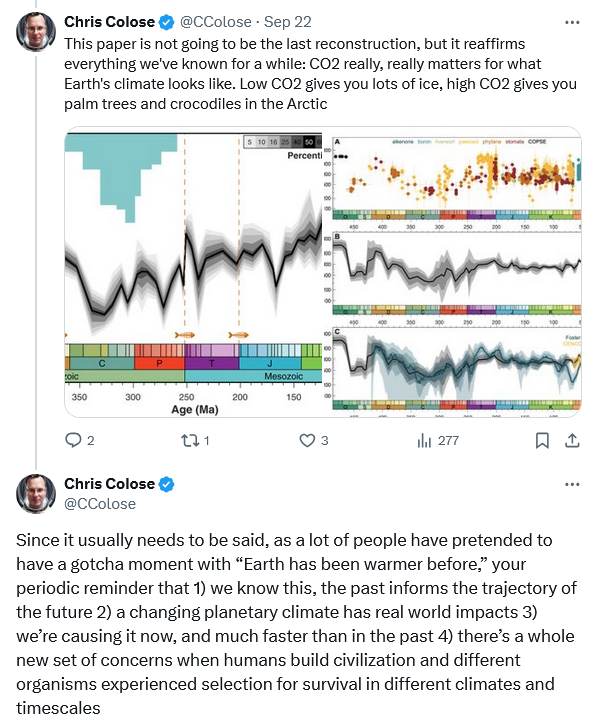
chubbs
Members-
Posts
4,059 -
Joined
-
Last visited
Content Type
Profiles
Blogs
Forums
American Weather
Media Demo
Store
Gallery
Everything posted by chubbs
-
Sorry that the raw data doesn't fit your expectations. If we had stations at the same locations as the early 1940s network, Phoenixville and the built up sections of Coatesville and West Chester, would you want to use those 3 for our current county average?
-
Recently updated ocean heat content data shows cooling in the last 6 months through June. This is consistent with the enso cycle and rise in global temperatures, as more heat is radiated from a warmer atmosphere. Good news, perhaps a sign that the recent string of warm months will moderate. We'll see, the data is noisy.
-
NOAA's results are completely driven by the raw data. When you complain about NOAA, you are complaining about what the raw data shows. After their moves both West Chester and Coatesville were colder than ABE on occasion, as is East Nantmeal, and other current Chesco stations as well. Phoenixville and the built-up sections of Coatesville and West Chester are warm stations, much warmer than the county as a whole. Their average is warmer than the Philadelphia airport at times in the early 1940s, before the Coatesville move. Not surprising that the NOAA county average is always cooler than those 3 stations.
-
You are playing rhetorical games. Yes, we know that NOAA doesn't match the raw data, that's a positive because the raw data is biased. Coatesville and West Chester moved and cooled relative to nearby sites. This is very easy to see by comparing Coatesville, West Chester, and Phoenixville. For instance, Coatesville was 0.23F warmer than West Chester from 1941-45 and 1.98F cooler from 1948-52. Other stations outside of Chester County confirm the timing and impact of the moves. NOAA gets the timing and impact of the moves as reflected in the bias adjustments. For instance, the average bias adjustment for West Chester from 1895-1969 is -1.95 vs +0.02 for 1970-85 after the move in early 1970. The West Chester bias adjustment is primarily move-related. The moves are a good test for the analyst. You can't get an accurate picture of Chester County's climate without accounting for the station moves. We only have 3 stations with long-term data; and 2 of them had significant moves that biased the raw data, The science-based method that NOAA employs nails the moves, a good example of why bias adjustment is important.
-
Yes the 06z forecast for global temps over the next week is warm, hasn't changed much recently either.
-
The 2 main station moves can be spotted in your plot, but they are hard to see with all the other station changes. Those 3 stations should move in sync from year-to-year because they experience the same weather. When they don't a station change has occurred, which is why bias adjustment is needed. Much easier to see the station moves when the before-move and after-move sections are separated. The move-related cooling is clear by comparing to the 2 stations which didn't move (West Chester and Phoenixville 1946-47, and Coatesville and Phoenixville 1970). Looking at the before or after move periods individually, there is very little temperature trend at Coatesville or West Chester. The before-move portions are flat and the after-move portions are flat, just at different levels reflecting the site moves. The cooling in the 1941-75 period at those 2 stations is mainly due to the moves. Fortunately the moves occurred at different times which allowed their "chilling" effect to be identified. No move at Phoenixville, but as we saw previously, Phoenixville ran very warm in from the 1930s to 1950s. Phoenixville cooled significantly relative to the other two station at the end of the 1950s. Another station change. Since you want to look at data from outside Chester County, here are the Mt Holly NWS climate sites for this period (Atlantic City data is from the Weather Bureau Office on the roof of the Tuna Club building). Despite being further apart, these 4 station are much more in sync from year-to-year than the Chesco sites. Why? They are higher quality sites with fewer site changes. The overall trend over the period at these 4 stations is flat. There is a slight downtrend to the 1960s, but warming at the end brings 1975 up to 1941 levels. If these 4 stations are flat, you can be sure that Chester County is flat as well. All experience the same weather. Non weather effects, like station changes or heat island near the station, would impact each site differently and would be easily spotted by bias adjustment software. For the past several months you have been promoting a misleading denier strawman. The NOAA analysis uses only raw data as input, same as you; but, NOAA is doing a much better job of analyzing the raw data than you are. Well-proven science and a large database make the NOAA analysis bullet proof. We've confirmed that in our Chesco County deep dive. NOAA's individual Chesco station adjustments line up perfectly with station moves, time of day bias, warm sensors, etc. No its your analysis that produces a result that is far from our actual climate history.
-
Whether you can accept/understand or not, the raw temperature and other data is clear. When the stations moved, they cooled by roughly 2F relative to nearby stations. We know the locations of the stations before and after the moves. We know when the moves occurred. We know the temperatures at all the local stations. The photos are just the icing on the cake.
-
Glad you think I am not scientific. Puts me in good company with scientists and other experts. I find the site photos useful. In the case of Coatesville and West Chester: the photos, the NCDC site information, and the "actual" raw temperature data from multiple sites all paint a consistent picture. The stations moved from town-->rural and the temperatures cooled at the time of the move. We been discussing this for a long time and you haven't provided any evidence to the contrary. Happy to correct the chart though if you have better information.
-
Of the stations over 550' only one is in Southern Chester County: West Grove (added in 2014) located at the top of the SECCRA landfill, well above the natural terrain. Another example of how the newer stations are different than the older COOPs. Glad you didn't find any problems with the chart. We know that the town-->rural changes are important because Coatesville and West Chester both warmed 2F when they were moved small distances from towns to more rural sites.
-
The 1980s drop to 7'th coldest at Coatesville and 10'th coldest at West Chester after the moves from town to more rural locations are are accounted for. (Coatesville in 1946/47 and West Chester 1970). Below is a graphic that summarizes the network you are using. A capital X denotes a full decade. Small x partial. Town or Human disturbance is judged by looking at a photo of the station or address. The stations are ordered from low elevation to high. Elevation increases as you move north and west in the county, generally to cooler locations. The station changes are massive with time and work in the direction of chilling the network. Completely unsuitable for detecting climate trends. Downright misleading.
-
I didn't see any evidence that the 1980s were the coolest data locally in Chester County. Quite the contrary, the raw data clearly showed 3-4F warming vs 100+ years ago. You need to ignore stations moves and other monitoring network changes to conclude that there is no warming in Chester County. A clear case of cherry picking on your part.
-
I am keeping an open mind. I suspect the main problem is aerosols. We are doing a better job of cleaning up air pollution than anticipated (mainly in China). Note that this is a relatively benign view. Since the aerosols are going to be reduced at some point anyway with reduced fossil fuel burning. Synergy or some other unanticipated or stronger feedback would be much more problematic in the long term.
-
A recent interview with Gavin Schmidt on the current global temperature spike. Good questions but experts don't have the answers. https://e360.yale.edu/features/gavin-schmidt-interview
-
Interesting paper, can't say I understand the details. While several lower ECS model perform best under the metrics developed, several high ECS also perform well and can't be discounted. All of this is based on 1970-2014 observations. My concern is that the results would be different if updated with 2014+ obs when warming has accelerated. Would be interesting to check in any case.
-
CERES solar radiation at top of atmosphere through July. A little to early to call the peak as post July months have been active. In any case, solar is a tailwind for global temps this this cycle.
-
Meanwhile, https://www.orlandosentinel.com/2024/07/05/textbook-authors-told-climate-change-references-must-be-cut-to-get-floridas-ok/
-
CERES net radiation updated through July. Trying to find the minima for this enso cycle as nino-related warmth is radiated away. The good news is a big drop from the pre-nino peak. The bad news is a minima that doesn't dip quite as low as other recent minima.
-
Here's a good summary of what is known about climate change impacts on precipitation in hurricanes and Helene. Wasn't aware that precipitation in hurricanes may rise even faster than extreme precipitation in general, which is roughly 7% increase per 1C warming. Early estimates of Helen's CC enhancement (below) are generally consistent with the science summarized in the blog. There will be more to come on Helene though. https://www.theclimatebrink.com/p/climate-change-made-helenes-rainfall
-
Below is a comparison of the progression of this nino vs 1997/98 and 2015/16 in UAH6. The tail end of this nino is becoming almost as unusually warm as the beginning, particularly in UAH, which unlike ERA, has September 2024 warmer than 2023, 0.95 vs 0.90.
-
After a two month hiatus OI SST is back at record levels. Unusual this far into a nino-->nina transition
-
NOAA OIv2 SST including Sept to-date. Ticked up recently, as drop from nino peak continues to be slow. SST is consistent with the August precipitable water chart I posted above, with large increase in past 10-15 years.
-
Climate models predict abrupt intensification of northern wildfires due to permafrost thawing With this ensemble modeling approach, the team demonstrated that by the mid to late 21st century anthropogenic permafrost thawing in the Subarctic and Arctic regions will be quite extensive. In many areas, the excess soil water can drain quickly, which leads to a sudden drop in soil moisture, subsequent surface warming and atmospheric drying. "These conditions will intensify wildfires," says Dr. In-Won Kim, lead author of the study and postdoctoral researcher at the IBS Center for Climate Physics in Busan, South Korea. "In the second half of this century, our model simulations show an abrupt switch from virtually no fires to very intensive fires within just a few years," she adds. https://phys.org/news/2024-09-climate-abrupt-intensification-northern-wildfires.html
-
Chris Colose on recent paleoclimate study going back 500+ million years. See his twitter thread for his perspective on technical details.
-
Yes, increasing winds played a role in antarctic sea ice gains up to 2015. Haven't seen anything on recent wind impacts or whether changing winds or temperature are driving recent decline.
-
Arctic and Antarctic sea ice has had a bit of a see saw in recent decades, often moving in different directions. The ocean overturning circulation is a potential link. Another factor to consider in evaluating Arctic and Antarctic sea ice trends.


